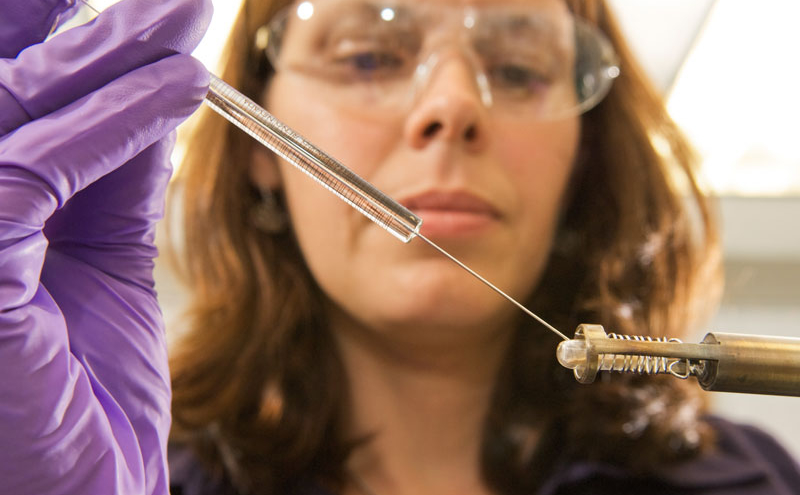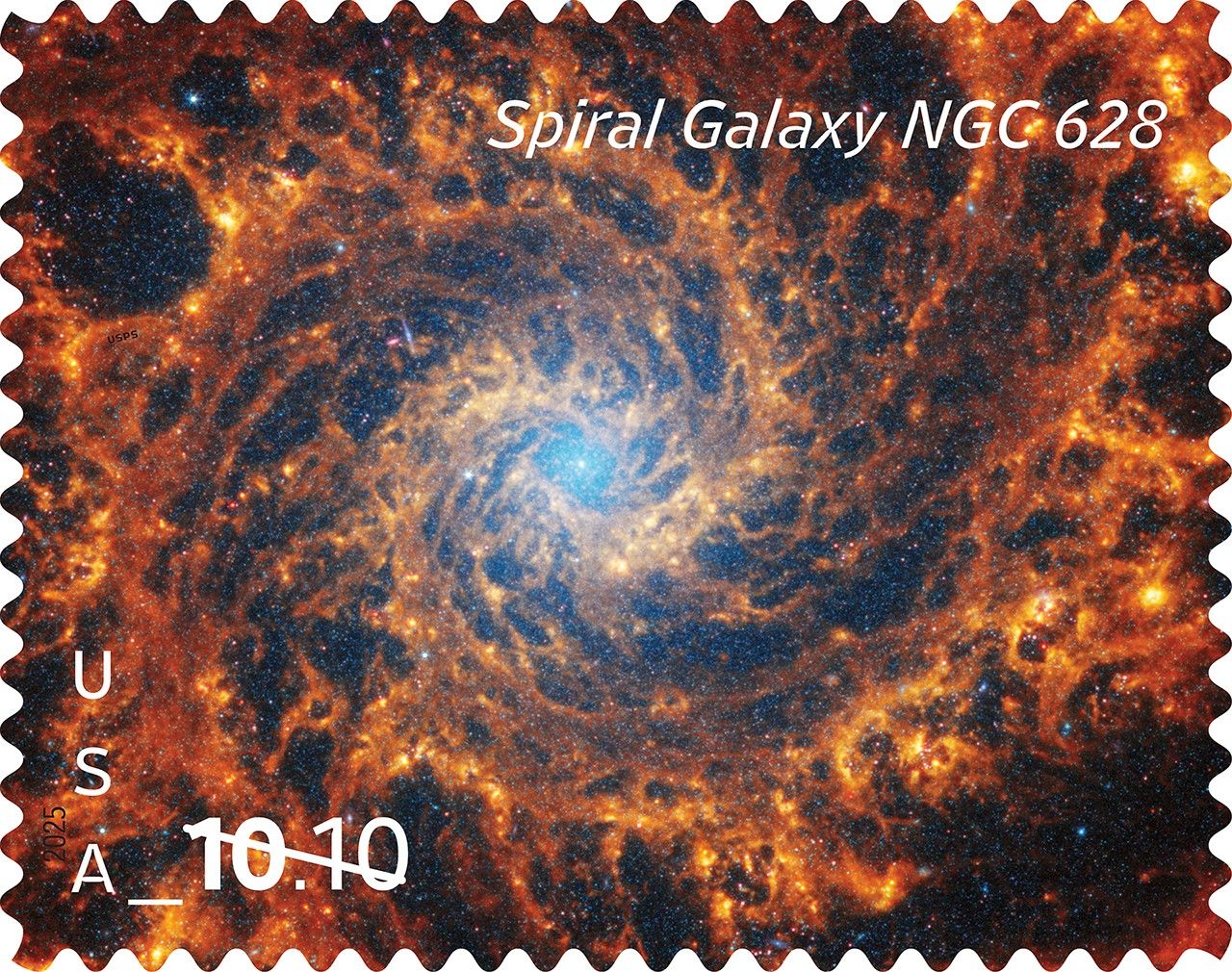The Curiosity rover has been probing the secrets of Mars since its arrival in 2012. Its discoveries include chemical signatures that could be related to life – or, alternatively, to geological processes. The Sample Analysis at Mars (SAM) instrument has found organic molecules, which are fundamental building blocks of life on Earth, but can also be produced in non-biological ways. Scientists have also observed sudden rises and falls in methane, a gas also associated with life, but which can be geological in nature, too. But with such a thin atmosphere, cold temperatures and scathing radiation from the Sun, the surface of Mars would be hostile to life. Where could life be hiding, if it were on Mars? Jen Eigenbrode, astrobiologist at NASA Goddard Space Flight Center, discusses.
Jim Green:Does Mars have the ingredients for life? Well, let’s find out from the latest observations from our Curiosity rover.
Jim Green:Hi, I’m Jim Green, chief scientist at NASA, and this is Gravity Assist. On this season of Gravity Assist we’re looking for life beyond Earth.
Jim Green:I’m here with Dr. Jen Eigenbrode and she is an astrobiologist at NASA’s Goddard Space Flight Center, specializing in organic chemistry, geology, and potential biology of Mars and ocean environments. So today, we’re going to concentrate on what we know about the potential for life on the planet Mars. Welcome, Jen, to Gravity Assist.
Jen Eigenbrode: Thanks for having me, Jim. Happy to be here.
Jim Green: Well, you know, you’re part of a fabulous team working on a spectacular instrument on the Mars Curiosity rover called SAM, which is the Sample Analysis at Mars instrument.
Jim Green: Since curiosity landed in Gale crater in 2012, August 2012. I mean, I know exactly where I was when that happened. What’s it been up to since then? And how far has it gone?
Jen Eigenbrode:Yeah, so after we landed at Bradbury landing site, we drove to the Yellowknife Bay, which is this, the deepest part of Gale crater. And at that location, we found evidence, the first evidence, of an ancient lake on Mars. That was a significant finding, because it was the first time we had identified what we thought was an ancient habitable environment on Mars. That means it’s a place life could have been supported, it doesn’t mean that it was there. So we kept looking. From that point, we drove to Pahrump hills, and that’s about 5 miles I believe, as the crow flies. And what we discovered there was that, indeed, we had come across more Lake sediments. And from that location, we started chugging up the mountain.
Jen Eigenbrode:It’s 3 miles tall. It’s gigantic. And we’re lucky enough that we don’t have to go too far.
Jen Eigenbrode:Of course, we don’t have evidence of life from the Curiosity Rover, it wasn’t really designed to get all of those types of details that we have found evidence of organic materials, which could be from life or maybe not.
Jim Green:Well, why are you so interested in the organic molecules. What about them is that connection to life?

Jen Eigenbrode:When we look up at the Red Planet, it’s a red, it looks like it’s just rusty. And what we found out so far is not really rusty, it’s just dust on the surface that’s like that. And underneath, it’s actually darker gray in a lot of places. And that darker gray tells us there’s a different chemistry that’s been preserved. When we started this mission, there were a lot of scientists who really doubt[ed] we were going to find any organic molecules at all.
Jen Eigenbrode: And it was because we thought the planet was rather quiet, not doing much, old and rusty. But we’re actually finding things. And that means that if we’re finding organic molecules in 3 billion-year-old rocks, that they have been preserved over that time period. So the question is, do those organic molecules tell us anything about whether life was there or not? Certain types of organic molecules, or collections of molecules, are considered signatures of life, meaning, they’re most likely to be formed by life rather than other processes. Sorting through those and making sure that it’s a life process versus a non-life process is kind of challenging at times. But when there’s evidence of life in our Earth sample, usually you find multiple lines of evidence for that life.
Jen Eigenbrode: The fact that we found organic material in these ancient lake sediments, tells us that if we look in the right place, perhaps we’re going to find that evidence of life.
Jim Green:What are some of the measurements that SAM makes?
Jen Eigenbrode: What Sam does is, it takes a powdered sample, that could be something that was drilled. And in some cases, it was even something that we scooped from the surface, say like, you know, a sand patch or something like that. Anyway, it takes those sediment fines, and it sticks some into the top of the rover body, there’s a little inlet up there, and it sticks it in there. And then SAM shakes it down into a little tube, and all that sediment ends up in an oven. So then we close the door, and we heat up that oven. And as we heat up the oven, the organic molecules and some of the other inorganic stuff that’s in there starts to evolve as a gas.
Jen Eigenbrode:So, for instance, if there’s water on any of those sediments, it goes off as water vapor really quickly, and we detect it. But the organic molecules, some of them come off really quickly. And some of them take a lot of temperature to get them out. So we heat that sample very slowly, up to about 1000 degrees. And when we do that, we can see what types of gases come off at different times. And we can compare those types of data to what we find on earth to try and understand what it’s, what those gases are telling us about the composition of the sample as a whole.
Jim Green:So is it stuff that can be generated biologically?
Jen Eigenbrode:When we look at organic materials that are formed by non-life processes, such as in a meteorite that was formed in our solar system before the planets really got established that I mean, there’s organics all over our solar system, and most of them are non-life related. And when we process it in an instrument like SAM, we see similar types of molecules coming off at high temperature, just like we did at Parrump Hills. And if we take a sample of, let’s just call it an ancient soil, maybe something that’s 60 million years old. So, it’s been around for a while, it actually looks more like a rock now than a soil. But you know, that was around when there were plants, and there was organisms, you know, in the mud. So it’s been geologically processed, but it still originated from life. And when we process that in [a] SAM-like instrument, we see the same type of molecules that we saw at Parrump Hills.
Jim Green: Wow.
Jen Eigenbrode:So it’s hard, we do not have enough information to tell what the source was.
Jim Green: Okay, so what do we need to be able to supplement these kind of observations to carry on to the next level of understanding? Do we have to bring samples back from, from Mars?
Jen Eigenbrode:And that’s one idea that people have had, yes, another is to drill deep. And so we actually, the human race, is actually going to see this unfold in the upcoming years.
Jen Eigenbrode:We have the Mars perseverance rover, that is heading to Mars right now, we expect it to land in February. And it has the capability of looking for organics in a different way than what we did with SAM. It’s going to look for traces of the organics and how it, it’s packaged in the sediments, both at a really fine scale, and then at a scale that a human eye can see. And both of them will tell us a lot about how organics were preserved, how they got into the sediments in the first place, and sometimes, they may give us additional features that are suggestive of life, like what you’ll find in a stromatolite on Earth. Now the other Now, the other parts of it, and if we find any signs of organics, package those samples up because we’re bringing them home.
But the other possibility that I mentioned was ExoMars. And ExoMars is going to drill deep. So if ionizing radiation is playing a big part, in what we see at the surface, and then perhaps drilling deep will get us away from all of that, and we’ll get something that’s a little more pristine and less altered. But until we get those results, we just.. I’m sure Mars is going to Mars surprises all the time.
Jim Green:As it always does. Now, the ExoMars rover is a European Space Agency rover that’s going to be launched in 2022.
Jen Eigenbrode:That’s correct.
Jim Green:And so we’ll see, we’ll see what they find. And they have the ability to go down several meters. That will be fantastic.
Jim Green:Another spectacular thing that Sam does is just sort of open that port on the deck and let the atmosphere come in. And then it goes through that same process. Tell us some of the things that we’re finding out about the atmosphere of Mars.
Jen Eigenbrode:So on Mars, there is a 1% of the density of air and atmosphere around that we have on Earth. So there’s not a lot of atmosphere to begin with. But there’s definitely a lot going on. There’s, we’re seeing methane.
Jim Green: Wow.
Jen Eigenbrode:And then on Earth, methane is except for localized areas where there’s a lot of methane coming out of the ground or from industry or something like that, methane is pretty stable in Earth’s atmosphere. The amount of it doesn’t change. But here’s a weird thing of Mars: it does change. So it’s trace amounts. And we see a change in the methane abundance seasonally. So it gets low in the cooler months. And then when summer comes around it, it rises. But then it drops again.
Jen Eigenbrode:Okay, what’s going on there? And then on top of that, SAM has detected what we call methane burps. I mean, it’s just like this instantaneous rise. And, quick, do another measurement. Wait a second. That methane signal’s gone. What happened? It was there. And then it disappeared.
Jim Green:Yeah, so methane is one of those things that can be generated by life. I mean, all life emits methane. But it can also be generated abiotically. Have we sorted out which one it is that Mars is emitting in these, mostly in the summer months?
Jen Eigenbrode:We don’t know. We don’t know. But what we do think is that the methane is probably largely coming from the ground somehow.
Jim Green:Leaking right through the ground.
Jen Eigenbrode:There’s scientific rationales for how that might happen. But we wouldn’t really know what’s controlling it. And we don’t know how widespread it is.
Jen Eigenbrode:It’s one of the most exciting observations I think we’ve made, but also one of the most perplexing because we really don’t understand it. And yes, it’s an incredibly important molecule because it could be from life.
Jim Green:Mm. Wow. Well, you know, another important molecule that SAM has been measuring is oxygen. Hasn’t been making some really great measurements of O-2, two oxygens together.
Jen Eigenbrode:It sure is, and you know, oxygens changing to which we never expected, oh, it rises in the spring. And then it starts to kind of drop off when that thing starts coming up. What’s interesting is that you’re talking about two molecules that readily react with each other. And they have different patterns, we don’t understand why they’re changing like they do. And the fact that we do see it changing means that there are active processes going on on Mars that we still haven’t uncovered yet. They’re going on right now. So there’s a lot more to investigate to understand what that is.
Jim Green:Very cool. Well, so we’ve got methane and oxygen coming and going, and you know, complex organic molecules in the soils. All these are fantastic, possible indications of life on Mars. So, Jen, do you think that Mars had life in its past and maybe even life there today under the surface? What do you think?
Jen Eigenbrode:As a scientist, I think it’s very possible. Because early Mars was probably very much like early Earth in its environments, protected with a magnetic field so it didn’t have all of the ionizing radiation. There was lots of heat around, because we had impact events happening, hydrothermal vents, all of the chemistry of Mars tells us that there is geochemicals that could have been a fuel source for or for life. It’s just a matter of, did all the right steps happen to actually get life there? And did life actually persist?
Jen Eigenbrode:So it is possible that life did exist on Mars. But the next question is, did it persist into later, into Mars history, and even possibly into today? One thought that a lot of astrobiologists have been thinking about is that if life ever did get going on Mars, when the ionizing radiation hit, and the climate changes started happening, perhaps it got too tough for life near the surface, and it went into the subsurface. And that’s where it persisted. So if that’s the case, then the records of the ancient life — meaning after the magnetic field was gone — might be in the subsurface.
Jim Green:Well, you know, in addition to looking at Mars, you’ve also done some interesting field work here on Earth. What are some of the things that can be done on Earth that are sort of Mars analogues?
Jen Eigenbrode:Sure, we look at ancient rocks on Earth that have modern life living in them. So we can try and pull apart multiple records of life, and understand how you take all these signatures, signatures of non life, signatures of old life, signatures of modern life, and separate them apart so that you can understand what’s going on. And it’s important to look at things like that on Earth, because on Mars, we may be looking at contributions from meteorites, contributions from Mars as a planet from a non-life perspective, and possible Martian life.
Jen Eigenbrode:And there’s ice on Mars, we might actually be exploring that someday in the future. But then there are other places in our solar system, where we have these moons that have a rocky core, an ocean around that, and then a thick layer of ice. They’re like snowballs, going around bigger planets. And what’s really interesting about that is that there’s enough heat generated around that rocky body that it could be generating hydrothermal vents, and, into the ocean. And we know that they have salts.
Jen Eigenbrode:So we could be looking at a scenario that’s very similar to the hydrothermal vents we have on Earth’s oceans, in the deep, deep, deep part of the oceans where there’s so much chemistry happening. They’re ideal spots for not only perhaps starting some of the biochemistry of life and the origin of life, but also allowing it to diversify. And so if it’s, if it happened here on Earth at those locations, perhaps it happened in these icy moons at their locations, those oceans may have an independent genesis of life.
Jim Green:So have we seen any hydrothermal vent-like systems in the ancient ocean of Mars?
Jen Eigenbrode:Curiosity has looked at some, both minerals and isotopic chemistry, that tells us that there was a hydrothermal influence on some of the materials that we found, or that’s important. It may not have been right there at Gale crater, but the sediments could have been transported from a hydrothermal area to where it was found. We don’t know those details yet. However, at Jezero crater, there are a few locations where we think there may be actual evidence of hydrothermal vents. And I know that the Perseverance mission is trying to get to those places in their drive plan. So I would just say: Be patient.
Jim Green: You know, I thought I was excited enough about Perseverance. But that just blew my mind.
Jim Green:Well, you know, Jen, I always like to ask my guests that there must have been something, a person, place, or thing, event or something that got them so excited to become the scientists they are today. And I call that event in their life a gravity assist. So Jen, what was your gravity assist?
Jen Eigenbrode:Yeah it’s a good question. I think that I’ve always asked the question “why” maybe too many times. But even as a young kid, I was very interested in science. But it wasn’t until I got outside and started hiking around and enjoyed nature for what it was that I started asking: How did it all get here? And that’s when I became the scientist that I am today.
Jen Eigenbrode:Looking around the mountains, looking at the rocks that you see, they’re all so different, all the life that we have on our planet, and then you look compared to something like Mars, which doesn’t seem like it has anything from a distance. How did Earth become what it is today, and is it really special? How special is it, compared to everything else in our solar system? Why do we exist here today? These are the types of questions that made me the scientist that I am now. And, you know, searching for life in our solar system is just one aspect of that, that I’ve devoted my career to.
Jim Green: Well, you know, I really hope and I’m sure you do, too, that we’re alive when we answer that question, “are we alone?” Because I think the answer to that is, life is everywhere. And try to find, we don’t necessarily know always what we’re looking for, if it’s not going to be like us. And yet, evolution takes it in different ways that, that we are really going to have to have some great evidence to be able to understand.
Jim Green: Well, Jen, thanks so much for joining me and discussing this fantastic topic of looking for life in our solar system and Mars in particular.
Jen Eigenbrode: Thank you for having me, Jim.
Jim Green: Well join me next time as we continue our journey to look for life beyond Earth. I’m Jim Green, and this is your Gravity Assist.
Credits:
Lead producer: Elizabeth Landau
Audio engineer: Manny Cooper



























